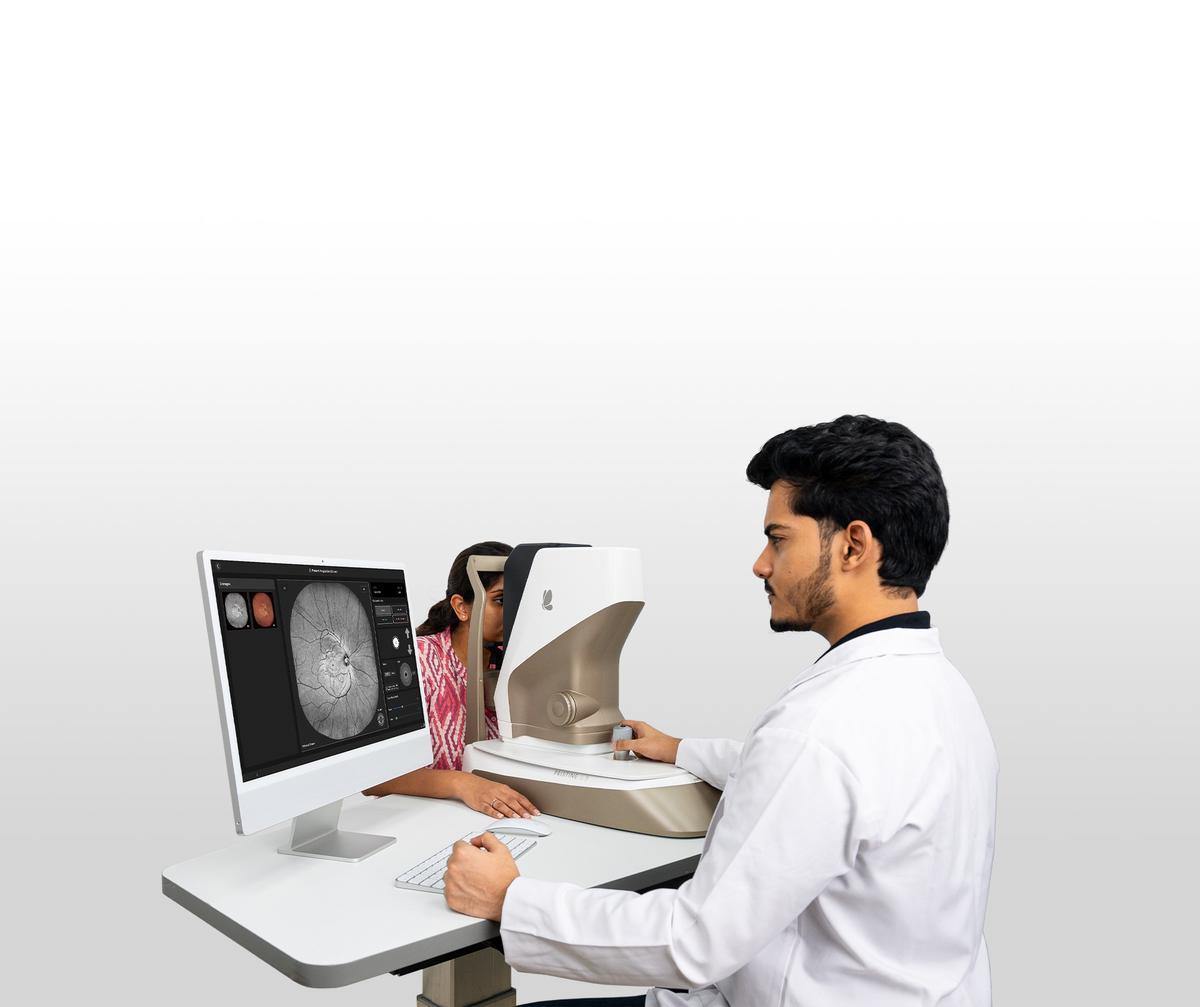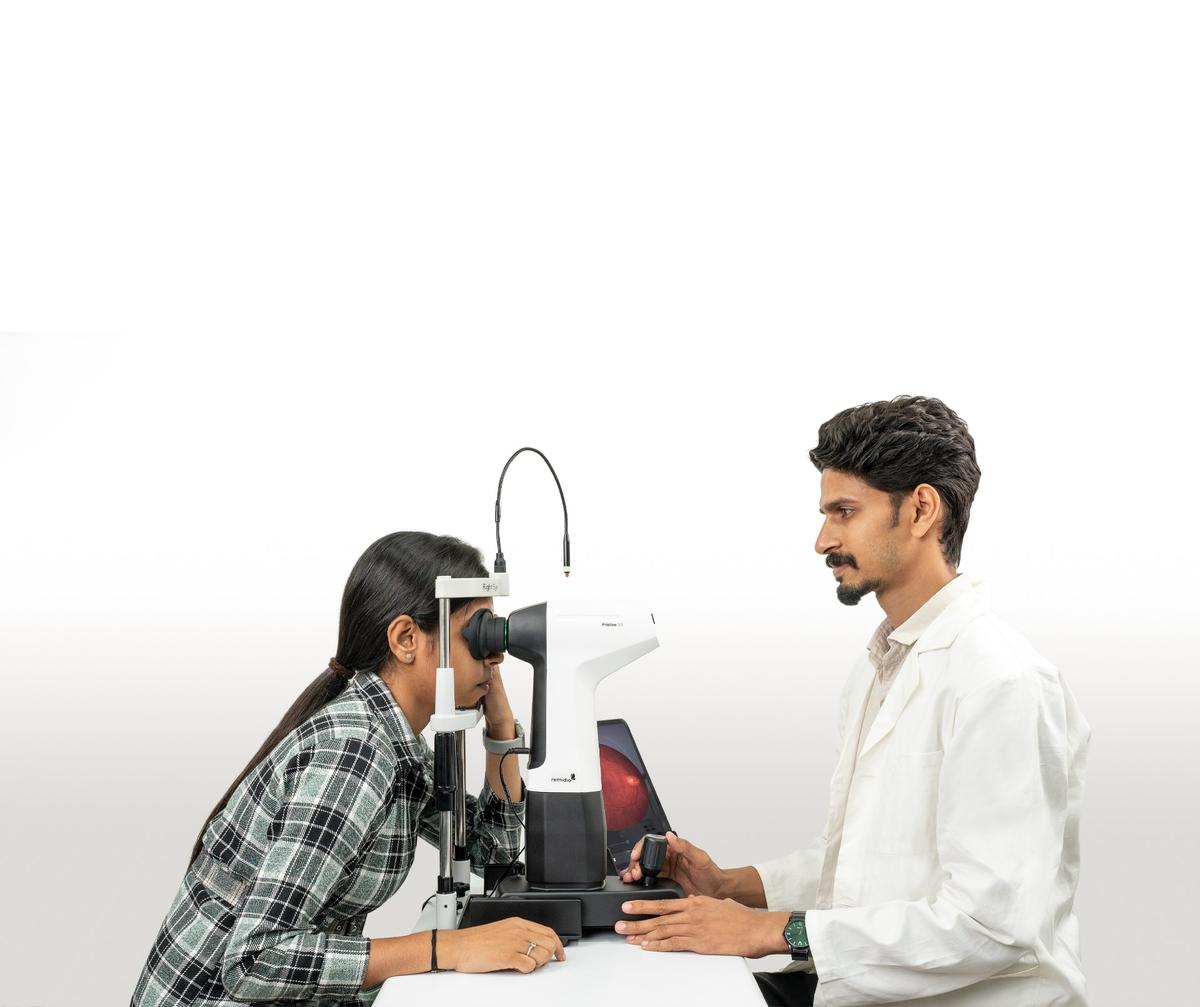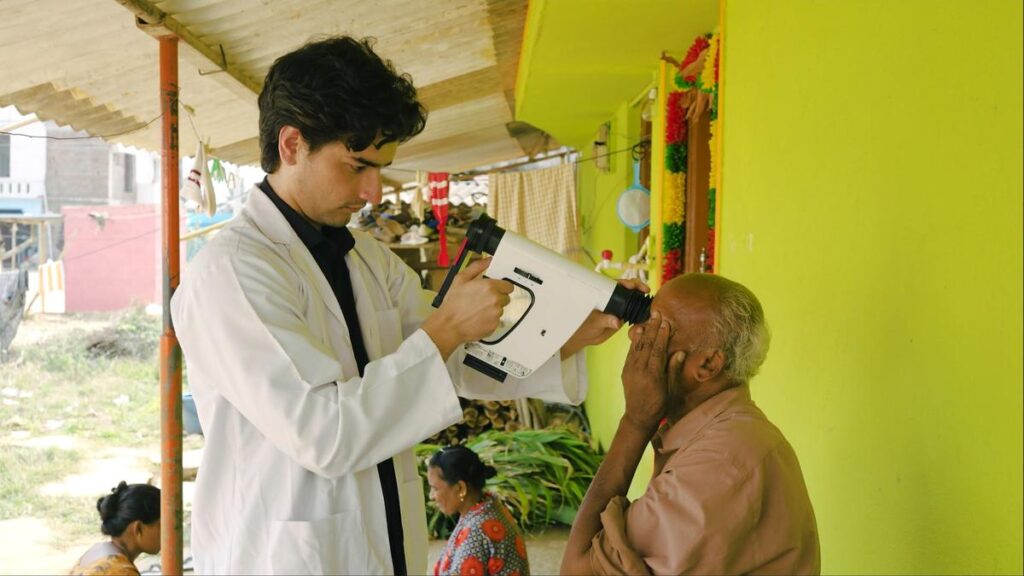“What are the health issues people are generally most worried about?” asks Dr. Anand Sivaraman during an interaction with The Hindu.
“Heart attack, may be…?” comes my answer, off the top of my head.
“There you go,” says Sivaraman, seemingly excited at hearing an answer he probably was expecting.
Cardiovascular risk is one of the most important health concerns for many. What if there was a way to predict such major concerns by simply screening the eye?
Remidio, a medtech company founded by Sivaraman, was conceived with the idea of early detection of eye health issues in under two minutes. However, the start-up is now looking to move beyond and work towards predicting systemic diseases such as cardiovascular risks, chronic kidney diseases, liver cancer and so on through retinal imaging and AI. Because, in Sivaraman’s words, “in India, if you don’t solve the problems of death, you can’t promote wellness.”

P1.5 -The world’s first ultra-widefield retinal imaging device capturing a 125° field of view through pupils as small as 1.5 mm, non-mydriatic, high-resolution, and artifact-free.
| Photo Credit:
SPECIAL ARRANGEMENT
Freeing up the specialist
It was a chance meeting with a doctor on a train and the conversation that followed which inspired Sivaraman, who was previously working with a start-up, to found Remidio.
“In invitro diagnostics, the testing is done elsewhere from the place of treatment. So, in a way, you’re saving the doctor’s time. Whereas ophthalmology is one of those areas where most of the testing is noninvasive but is still in the hands of a few specialists,” he points out.
This prompted Sivaraman to wonder if eye testing could be decentralised so that the specialist can spend more time on treating the problem instead of finding it. The solution had to be simple-to-use, and at the same time, global so as to make business sense. Today, the company offers more than 10 portable and multimodal ophthalmic testing devices integrated with teleophthalmology and artificial intelligence.
Initial years
Remidio’s first product came into the market in 2014-15 after years of building the tech and securing patents. Some of the initial funding came from the Wellcome Trust in U.K.
“The problem statement was about early detection and decentralising testing. We decided to first focus on those problem statements where you can’t reverse the condition and that’s how we focused on chronic retinal diseases,” explains Sivaraman.
The team closely worked with institutions like Aravind eye hospital to co-create models and devices. Around the same time smart phones started becoming popular. The team realized they could use it to their advantage.
“Most of those who were using ophthalmic devices were very scared to handle them due to the big size of the devices and the fear of something going wrong. So, we wondered if we wanted to democratize the testing process, what was that one tool that everybody relates to?”
The team’s answer to this was the smart phone, and they set on to try and build optics and electronics around the phone. Remidio’s first device in the market was thus a smartphone-based imaging system. Clinical trials were conducted to validate the performance and publications were published.

P 5.0- High-resolution wide-field (58°) retinal imaging powered by patented optics, aiding in early detection and photo documentation.
| Photo Credit:
SPECIAL ARRANGEMENT
Comprehensive testing
Since around 2019, the company started integrating AI into its solutions. Modifications were made to the device, and the start-up started deploying its AI algorithms. The company then also got into retinal imaging.
But the team observed something.
“People who turned in for screening would say they have a problem in their eye. They would not come in saying they have a retinal problem.”
This prompted the team to move towards more comprehensive eye screening and eye health assessment. Newer devices that could do multiple tests and asses comprehensive eye health were built to fit into the clinic workflows and a layer of automation was added to them. According to Sivaraman, Remidio today offers 95% of the tests that are done in an ophthalmologist’s office and the devices are designed for use by healthcare workers, vision technicians, and even volunteers with minimal training, making eye care accessible in non-specialist settings like PHCs and patients’ homes.
Around 2016-17, the company scaled its operations in the U.S. “We started accessing the convenience market in the U.S. with the same set of devices that served the access market here,” Sivaraman notes.
Remidio’s devices have so far been used to screen more than 10 million patients in around 20 countries globally. More than 40 clinical papers have been published on the technologies developed by the company and around 3000 devices have been installed across India, USA and Singapore. According to the company, the devices are being used at around 1,500 public health centers, ophthalmology clinics and primary care centers in India.
Predicting systemic diseases
Screening models like eye testing, however, often face a challenge. “When was the last time that you went for an eye checkup?” asks Sivaraman.
“We have realized that screening is not going to be effective unless you go beyond the eye. Most times, if you don’t have a problem you won’t go for a checkup. Preventive health is not what people often think about. People are more worried about heart attacks or cancer, so you have to address those issues with novel technologies, but close to patient context.”
Remidio is now, therefore, gearing up to screen for systemic diseases by testing the eye.
But how does one predict cardiovascular risks or stenosis or chronic kidney diseases by testing the eye? Sivaraman explains.
“Anything that has to do with vasculature flow can be looked at in the eye. Think of it as a set of pipes from the heart. If the pipes have a problem, the flow in the upstream and downstream are going to be affected. Which means, if there is problem in the pipes from the heart, the flow in the eyes will also get affected.”
Newer possibilities
According to Sivaraman, moving beyond the eye opens a whole new array of possibilities where prediction of conditions such as anemia, preeclampsia or even liver cancer could be explored. It allows the patient to screen for multiple conditions all using one device in a non-invasive manner. A large part of the company’s research is moving in this direction now.
“But you need to be careful to not do this in a pop science way,” Sivaraman stresses.
“It needs to be done in clinically validated manner. We have to ride on what has been proven in science. We are not a fundamental science company, but an applied technology company. We are taking problems statements where the science has been established, but the pathways for technological deployment have not been.”
Published – May 29, 2025 09:00 am IST
Source:https://www.thehindu.com/news/cities/bangalore/eye-as-a-mirror-how-a-med-tech-start-up-aims-to-predict-systemic-diseases-through-eye-screening/article69629524.ece

